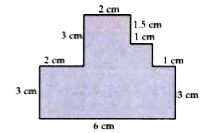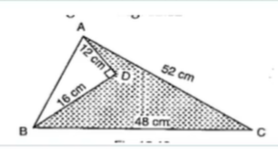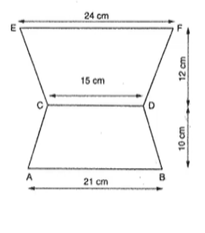How do you measure the area of an irregular shaped plane figure? Describe the graphical method to find the area of a leaf.
To measure the area of an irregularly shaped plane figure, such as a leaf, you can use a graphical method involving graph paper. Here’s a step-by-step solution:
1. Gather Materials: You will need a piece of graph paper, a pencil, and the leaf you want to measure.
2. Place the Leaf: Lay the leaf flat on the graph paper. Ensure that it is not crumpled or folded.
3. Trace the Outline: Using the pencil, carefully trace the outline of the leaf on the graph paper. This will help you visualize the area that you need to measure.
4. Count Complete Squares: Look at the graph paper and count the number of complete squares that are fully covered by the leaf. Each square on the graph paper typically represents an area of 1 cm².
5. Estimate Partial Squares: For the squares that are partially covered by the leaf, estimate how much of the square is covered. You can do this by visually assessing whether more than half of the square is covered (count it as 1) or less than half (count it as 0).
6. Calculate Total Area: Add the number of complete squares to the estimated number of partial squares to get the total area covered by the leaf.
7. Multiply by Area of Each Square: Since each square represents an area of 1 cm², the total count gives you the area of the leaf in cm².
Final Calculation:
- Let n be the number of complete squares.
- Let n′ be the estimated number of partial squares.
- The total area A of the leaf can be calculated as:
A=n+n′
- Let n be the number of complete squares.
- Let n′ be the estimated number of partial squares.
- The total area A of the leaf can be calculated as:
A=n+n′
Similar Questions
Knowledge Check
Find the area of the given figure.
 A25.5 sq. cmB23.5 sq. cmC25 sq. cmD24 sq. cm
A25.5 sq. cmB23.5 sq. cmC25 sq. cmD24 sq. cm
Find the area of the shaded region in figure.

View SolutionHow do you measure total cultivable land?
View SolutionFind the area of the shaded region in figure .

View SolutionFind the area of the shaded region in Figure.

View SolutionFind the area of the shaded area in the given figure
View SolutionFind the area of the given figure.

View SolutionFind the area of the given figure.

View Solution

